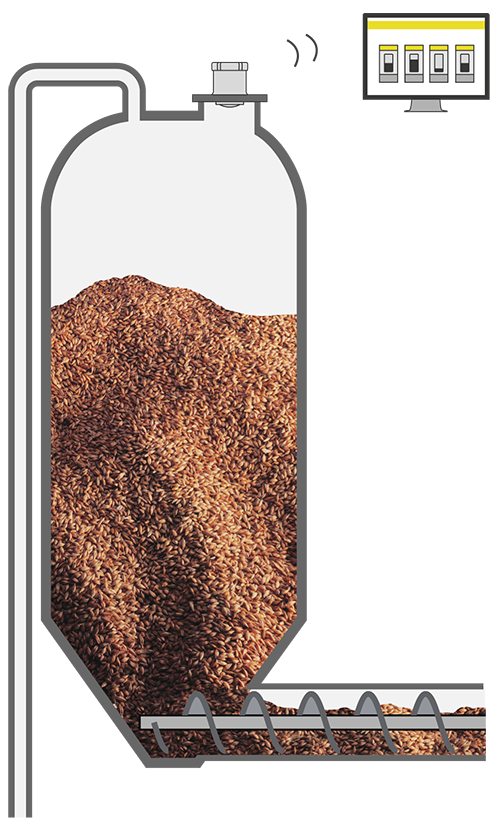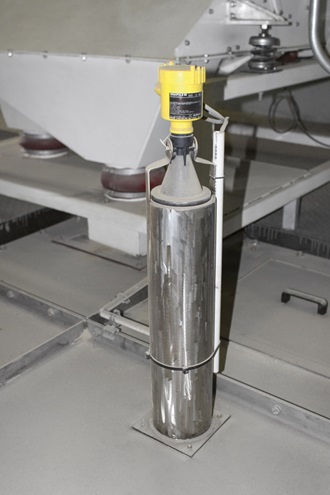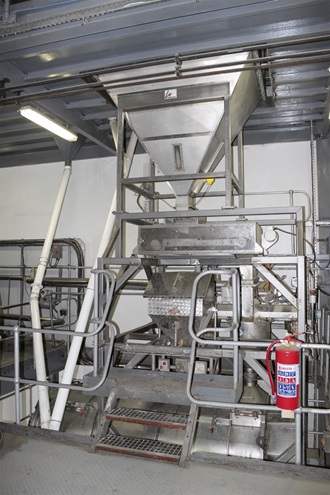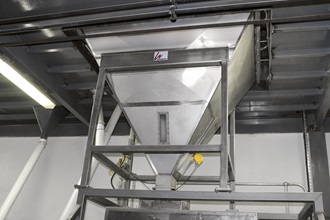VEGAPULS 69 radar sensor measures the level reliably in small dosing vessels
The South African company RCL Foods knows exactly what dogs like to eat. This leading African food producer not only produces various types of pet food, but has also developed and designed its own production equipment for just that purpose. Yet adding essential oils and fats to the food products has proven to be a very difficult and complex process.
The basic steps of the pet food process include sourcing raw materials, commingling via a dosing system that involves adding essential vitamins and nutrients, grinding to a specific specification and size, and then mixing. In the next step, the pre-processed product is fed pneumatically via a conveyor line to the extrusion unit. Steam, water and other ingredients are added there to produce many different shapes, sizes and mixes of animal feed.
Despite the significantly shorter wavelength of VEGAPULS 69, the sensor is very insensitive to deposits.
At first glance, the measuring point does not appear to be especially problematic. The ambient temperature is moderate and the food pellets are actually easy to handle. From time to time light vibration occurs in the system, but that normally does not affect the measurement. The real difficulty only becomes apparent when you take a closer look. The size, composition and density of the individual pellets vary constantly. What is more, the level itself changes very quickly because the product flows so quickly. That’s why reliable level measurement in the storage container was extremely difficult.
RCL has been working with Vega for more than a decade and appreciates the excellent service provided by the local subsidiary of the Black Forest company.
Reliable level measurement also in small vessels
Since the product flows quickly, the filling level also changes constantly. Reliable level detection in the storage tank is therefore no easy task.
Nevertheless: RCL Foods was particularly concerned about the low height of the container (only 2 meters) and the effective measuring range, which at 1.5 meters was even smaller. This is a problem that many users are familiar with, especially in applications with small apparatuses and vessels, for example in technical centres or pilot plants. The blocking distance (dead band) of the sensor, the size and design of the antenna or the measurement uncertainty at the bottom of the vessel normally pose some difficulties when it comes to obtaining a reliable measuring signal.
Although VEGAPULS 69 has a measuring range of up to 120 metres, it also copes well with small distances, such as those in the storage container of the South African company.
Good focusing enables measurement with sockets
Related applications
Animal feed silo

Level measurement in animal feed silos
To the applicationProducts
We need your consent
This content is provided by an external provider. If you activate the content, personal data may be processed and cookies set.
Related articles

Measurement of natural oils and fats for pet food production
Read moreExport this article
Download as PDFShare this article
Comments ({{comments.length}})
{{getCommentAuthor(comment, "Anonymous")}} {{comment.timestamp | date : "dd.MM.yyyy HH:mm" }}
{{comment.comment}}








